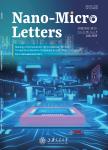Machine Learning‑Based Detection of Graphene Defects with Atomic Precision
Machine Learning-Based Detection of Graphene Defects with Atomic Precision作者机构:Department of Mechanical EngineeringUniversity of CaliforniaBerkeleyCA 94720USA
出 版 物:《Nano-Micro Letters》 (纳微快报(英文版))
年 卷 期:2020年第12卷第12期
页 面:331-343页
核心收录:
学科分类:12[管理学] 0808[工学-电气工程] 0809[工学-电子科学与技术(可授工学、理学学位)] 07[理学] 070205[理学-凝聚态物理] 08[工学] 1201[管理学-管理科学与工程(可授管理学、工学学位)] 0817[工学-化学工程与技术] 081104[工学-模式识别与智能系统] 080501[工学-材料物理与化学] 0805[工学-材料科学与工程(可授工学、理学学位)] 0835[工学-软件工程] 0811[工学-控制科学与工程] 0702[理学-物理学] 0812[工学-计算机科学与技术(可授工学、理学学位)]
基 金:This work used the Extreme Science and Engineering Discovery Environment(XSEDE)Bridges system which is supported by National Science Foundation Grant Number ACI-1548562
主 题:Machine learning Graphene Defects Molecular dynamics Nanomaterials
摘 要:Defects in graphene can profoundly impact its extraordinary properties,ultimately influencing the performances of graphene-based *** to detect defects with atomic resolution in graphene can be technically demanding and involve complex sample *** alternative approach is to observe the thermal vibration properties of the graphene sheet,which reflects defect information but in an implicit *** learning,an emerging data-driven approach that offers solutions to learning hidden patterns from complex data,has been extensively applied in material design and discovery *** this paper,we propose a machine learning-based approach to detect graphene defects by discovering the hidden correlation between defect locations and thermal vibration *** prediction strategies are developed:an atom-based method which constructs data by atom indices,and a domain-based method which constructs data by domain *** show that while the atom-based method is capable of detecting a single-atom vacancy,the domain-based method can detect an unknown number of multiple vacancies up to atomic *** methods can achieve approximately a 90%prediction accuracy on the reserved data for testing,indicating a promising extrapolation into unseen future graphene *** proposed strategy offers promising solutions for the non-destructive evaluation of nanomaterials and accelerates new material discoveries.



